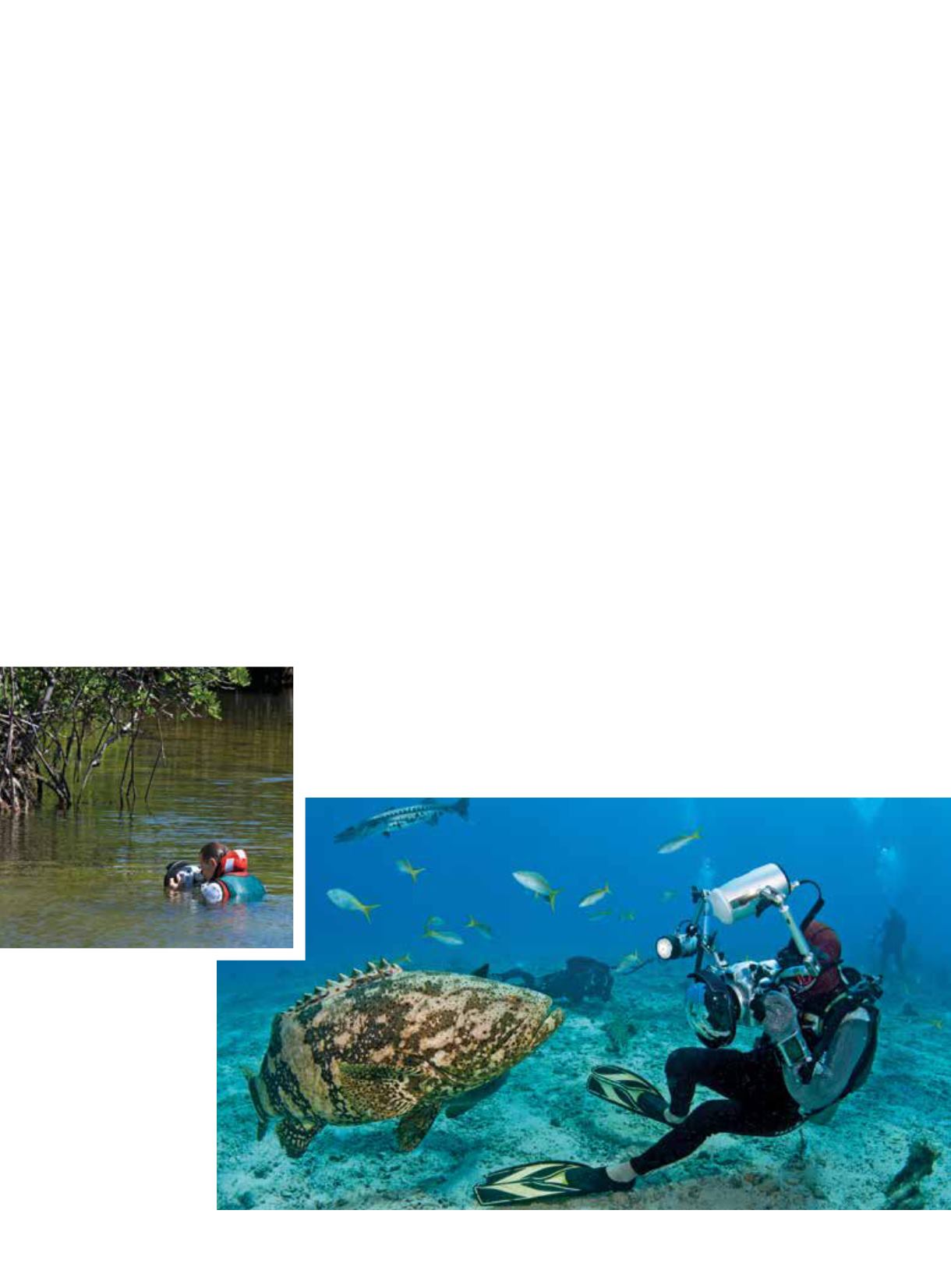
10
|
SPRING 2014
FROM THE SAFETY STOP
//
P U B L I S H E R ’ S N O T E
T
he need for photos to illustrate Sarah
Egner’s informative feature on seagrasses
and mangroves (Page 82) immersed me
once again in the complex labyrinth of
mangrove forests near my home in Key Largo, Fla.
Seeing the subtle beauty within and gaining new
appreciation for all the life sheltered there, I was
reminded of an apocryphal story from decades ago
attributed to one of the more successful real estate
developers in the Upper Keys. He wanted to build a
large hotel complex on the shores of Florida Bay, but
the coast was lined with mangroves, particularly at
the north and south ends of his land holdings.
Not surprisingly, laws protect our mangroves, which
help anchor the soil from hurricane-driven waves and
are habitat for myriad fish and invertebrates. As the story
goes, when the
developers’ crews
began to uproot
the mangroves to
improve the view
from the hotel
rooms, the Monroe County environmental inspector
came to take bold and immediate action. She told him in
no uncertain terms he was breaking the law and would
be fined $100,000 for the mangroves he’d removed at the
south end of the property. He just smiled and told her
she might as well make the invoice for $200,000, because
the ones at the north end were about to go, too.
The developer gained his view, and our marine
environment felt the pain.
I saw a similar story recently in a newsletter from
the Sanctuary Friends Foundation of the Florida
Keys. It had nothing to do with real estate but
everything to do with potential gain for a few and
pain for the marine ecosystem.
The Florida Fish and Wildlife Conservation
Commission is considering tighter restrictions on
sea-cucumber harvest — a limit of 200 sea cucumbers
per vessel per day as an alternative to the current
law, which allows commercial fishermen with a basic
saltwater license to harvest as many as they want.
Commercial sea-cucumber landings have increased
massively in the past year, probably due to a processing
plant located in the Lower Keys. There are now about
b y S t e p h e n F r i n k
Interconnectivity:
Th Pain and the Gain
Stephen Frink photo-
graphs the prop roots
of a mangrove forest
in Key Largo, Fla. The
habitat serves as a
nursery for reef fish
such as goliath grou-
pers, barracudas and
yellowtail snappers.
Tim Grollimund
Phil Darche


